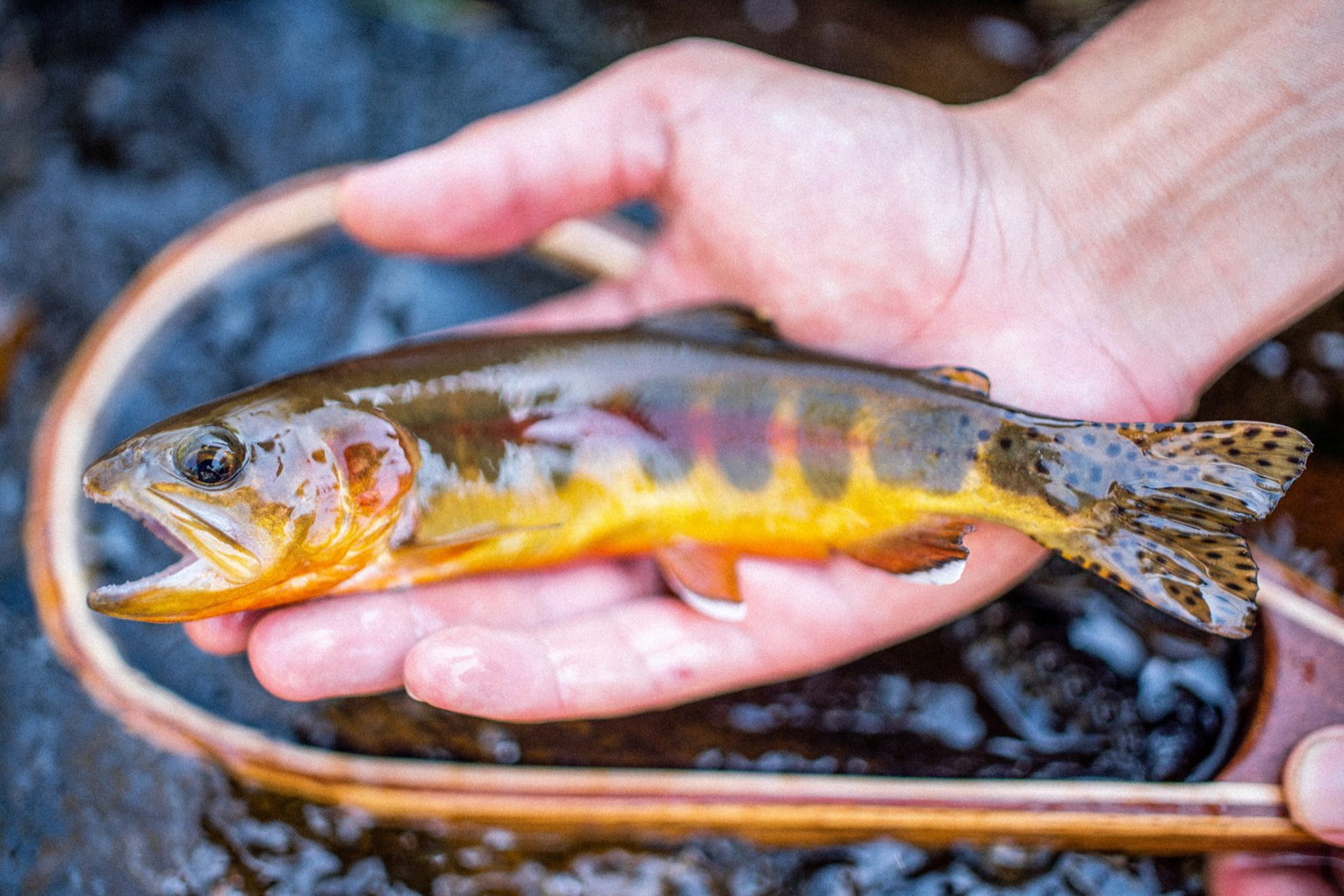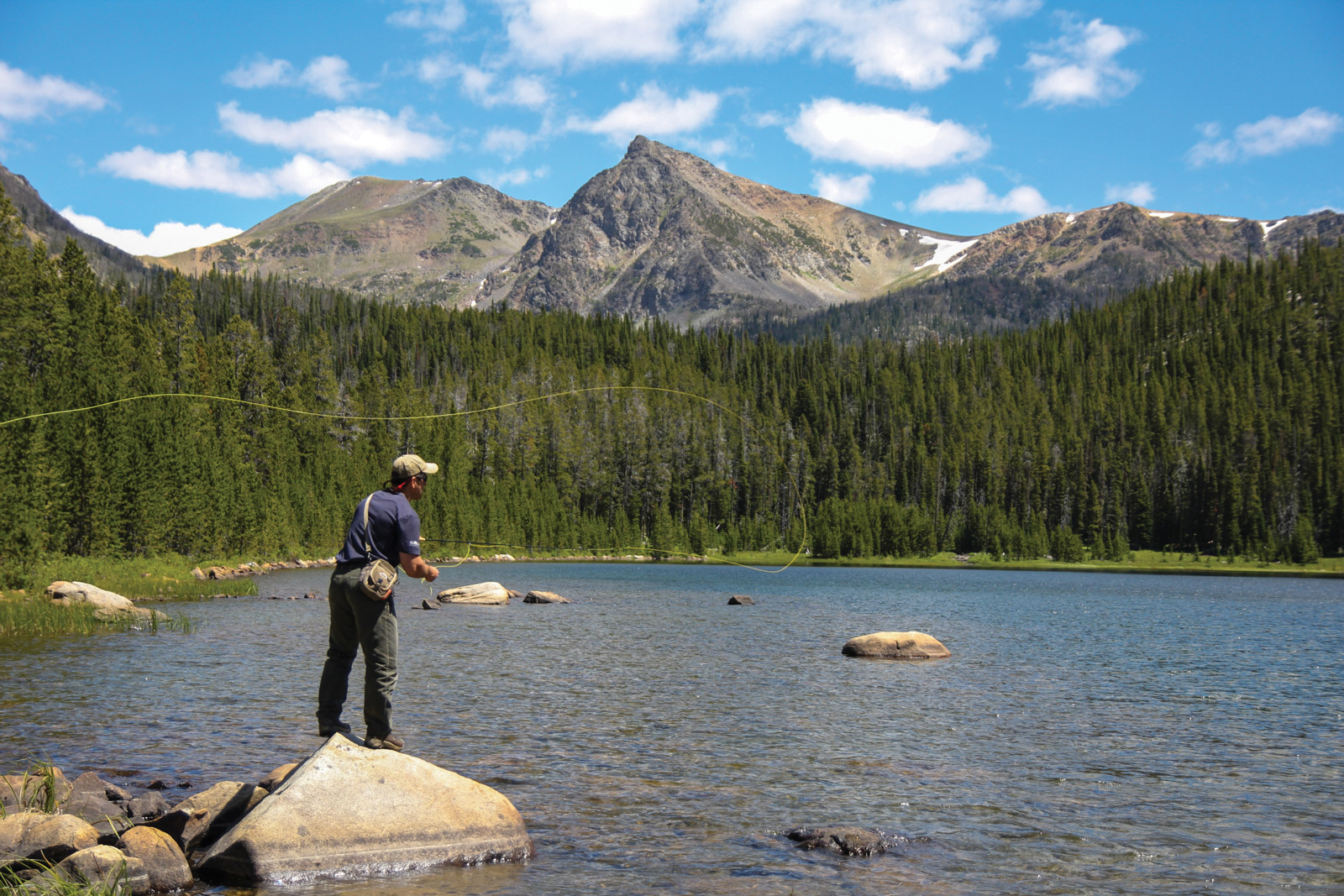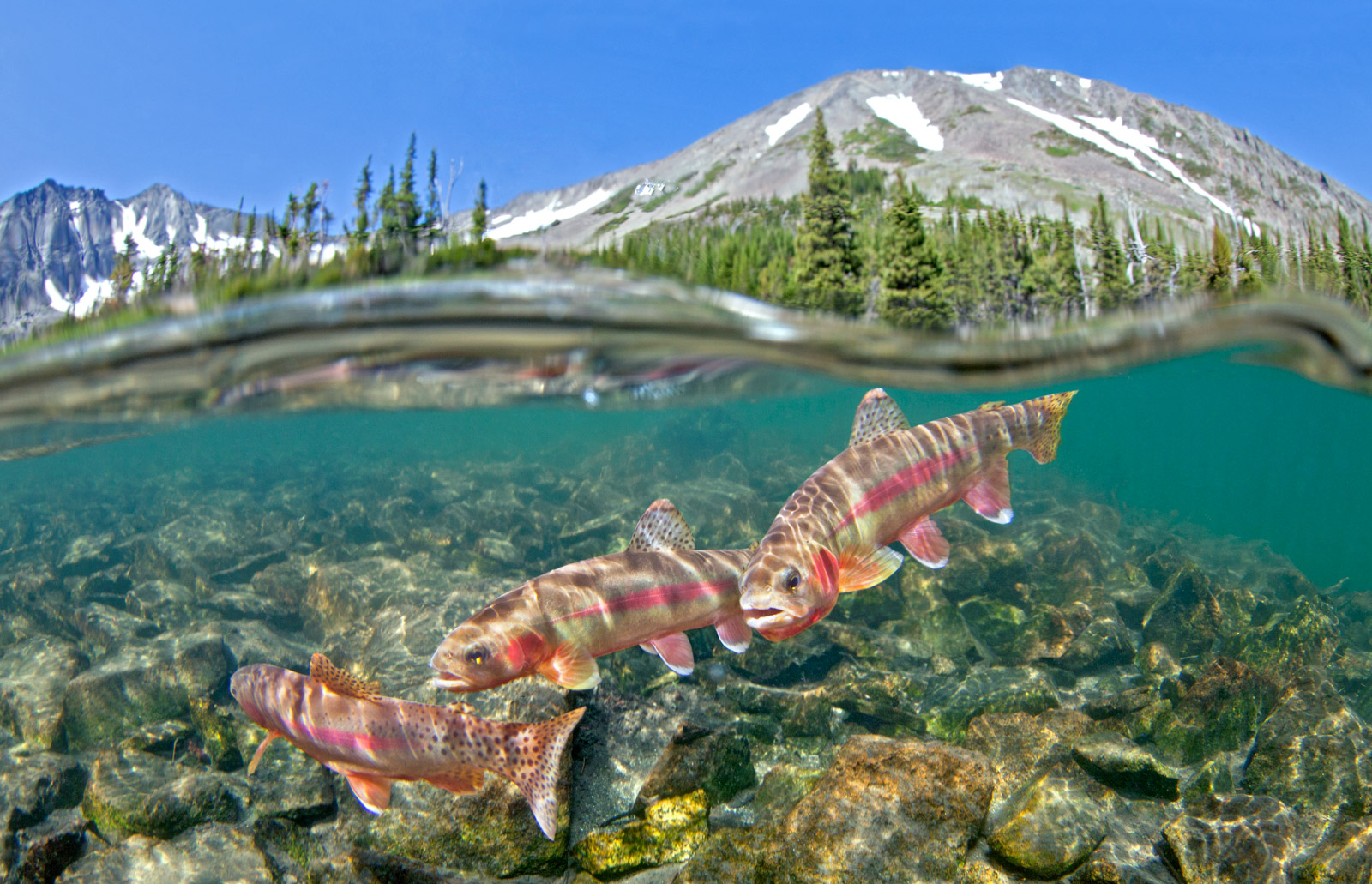Goin’ for Gold

by Mike England
Treasure hunting in modern-day Montana.
Throughout human history, gold has always been an object of intense desire. From the pharaohs of ancient Egypt to the Spanish conquistadors, from 19th-century miners to contemporary day-traders, countless men and women have succumbed to the shiny metal’s siren song, giving themselves over to its ceaseless—and often, fruitless—pursuit. In fact, it wasn’t long ago that Montana’s hills swarmed with tens of thousands of prospectors, all in pursuit of the glistening element.
Now, the metal is all but gone—replaced, however, with another type of gold. One that’s captured the imaginations of fishermen the world over, sending them on forays near and far, often driving them to the heights of ecstasy, the depths of madness, and every psychological state in between. Golden trout(Oncorhynchus mykiss aguabonita, for those who like mouthfuls of Latin), represent the new frontier in Montana, available only to those willing to work harder than the rest: to go deeper, to stay longer, to explore new country.

Where, then, can one of these salmonids take you? The short answer is this: across the most rugged terrain, through the most adverse weather, among the most ferocious beasts—and into some of the most beautiful country in the world.
Golden trout reside way up in the alpine, where the water is cold and clear; where grizzlies, wolves, and mountain lions roam; where blizzards batter the stone ramparts nine or ten months out of the year; and where only the most ambitious anglers and the most intense efforts are rewarded. Which is even more reason to load up the truck, fill up the backpack, and set out for one of only 20-some Montana waterbodies that harbor this gorgeous, gilded fish (check FWP’s online stocking records for an idea of where to begin the search).
Admittedly, most wide-eyed treasure-seekers head into the high country in July and August, when the weather’s more amenable. In lieu of rock picks and gold pans, bring a 5-weight fly rod and a basic selection of dry flies and nymphs. No need to get too fancy, as most of these fish will never see a fly or lure in their lives. A net’s a good idea, too, as golden trout are as fragile and malleable as their namesake metal.

While summer fishing might be most pleasant, if you wait ‘til September and October, like I do, you can pack a shotgun along. The only thing better than catching a golden trout in a pristine mountain lake is frying up a fat grouse on the bank afterward. Even if there aren’t any blues about, hunting offers incentive to explore the surrounding forest, to take a break from fishing and avoid the obsession that gold engenders. After such a sojourn, the introspective angler returns to the lake calm, composed, and content to land whatever he can, even it’s just a fish or two—which is a far cry from the compulsive speed-casting of summer. Indeed, autumn’s a great time to slow down, to ease out of the silly season and welcome a new pace of life, complete with shorter days, colder nights, and wilder weather.
So go online to fieldguide.mt.gov, search “golden trout,” and choose your own adventure. Odds are, it’ll be a long, bumpy drive, followed by a long, rocky hike, with a pack full of warm, bulky clothing. Once you arrive lakeside, ply the surface with a black ant, maybe a moth or small hopper. Then plumb the depths, twitching a scud or similar nymph. Keep at it, and don’t hold back—remember, fortune favors the bold. And when the stars align, when an unsuspecting swimmer hammers your well-tied, well-presented fly, enjoy that hard-earned pot of gold at the end of the rainbow.
